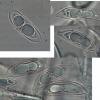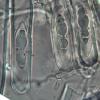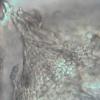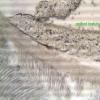
17-12-2025 18:35
 Michel Hairaud
Michel Hairaud
Bonjour à tous/Hi to everyone I am passing along

15-12-2025 15:48
 Danny Newman
Danny Newman
Melanospora cf. lagenaria on old, rotting, fallen

15-12-2025 15:54
 Johan Boonefaes
Johan Boonefaes
Unknown anamorph found on the ground in coastal sa

15-12-2025 21:11
 Hardware Tony
Hardware Tony
Small clavate hairs, negative croziers and IKI bb

15-12-2025 07:09
 Danny Newman
Danny Newman
indet. Rutstroemiaceae sp. on unk. fallen leavesMc

15-12-2025 07:05
 Danny Newman
Danny Newman
Pseudosclerococcum golindoi (det: Zotto)near Cosb

15-12-2025 11:49
 Danny Newman
Danny Newman
ITS sequences from the following two collections B

15-12-2025 12:34
 Danny Newman
Danny Newman
indet. Rhytismataceae on oak leafnear Purchase Roa

Dear friends,
here is another collection from Ethiopian mountain rain forest.
I think it is Cookeina colensoi, especially as the shape and size of the spores don't leave much alternatives,or does it?
The apothecia are approx. 1-1,5 cm in diameter, centrally stipitate by a short and thin, but well develloped stipe. The stipelength is approx. half of the cup diameter. Hymenium color is alutaceous, comparable to the hymenium of Tarzetta. The exterior is paler, nearly whitish. The margin is finely crenulate to fimbriate.
Spores are somewhat fusoid, not symetrical, 33-42 x 10-12 µm, smooth, and with knob-like protrudings at each spore end. These protruding can grow up to 2-3 µm in diameter. It seems that they devellop with spore maturity and may be they are a kind of germination of the spore?
Has someone experience with Cookeina colensoi and can confirm the determination (or cancel it ....)
I have the paper of Moravec, where SEM fotos of the spores are illustrated, showing them as being finely rugulose. I couldn't observe this in my material in light microscope.
best regards,
Andreas

i think this is the best choice! but i would exlude possible striation in cotton-blue because of p. venezuelae, which has also long, narrow spores with apiculi.
best
dirk




